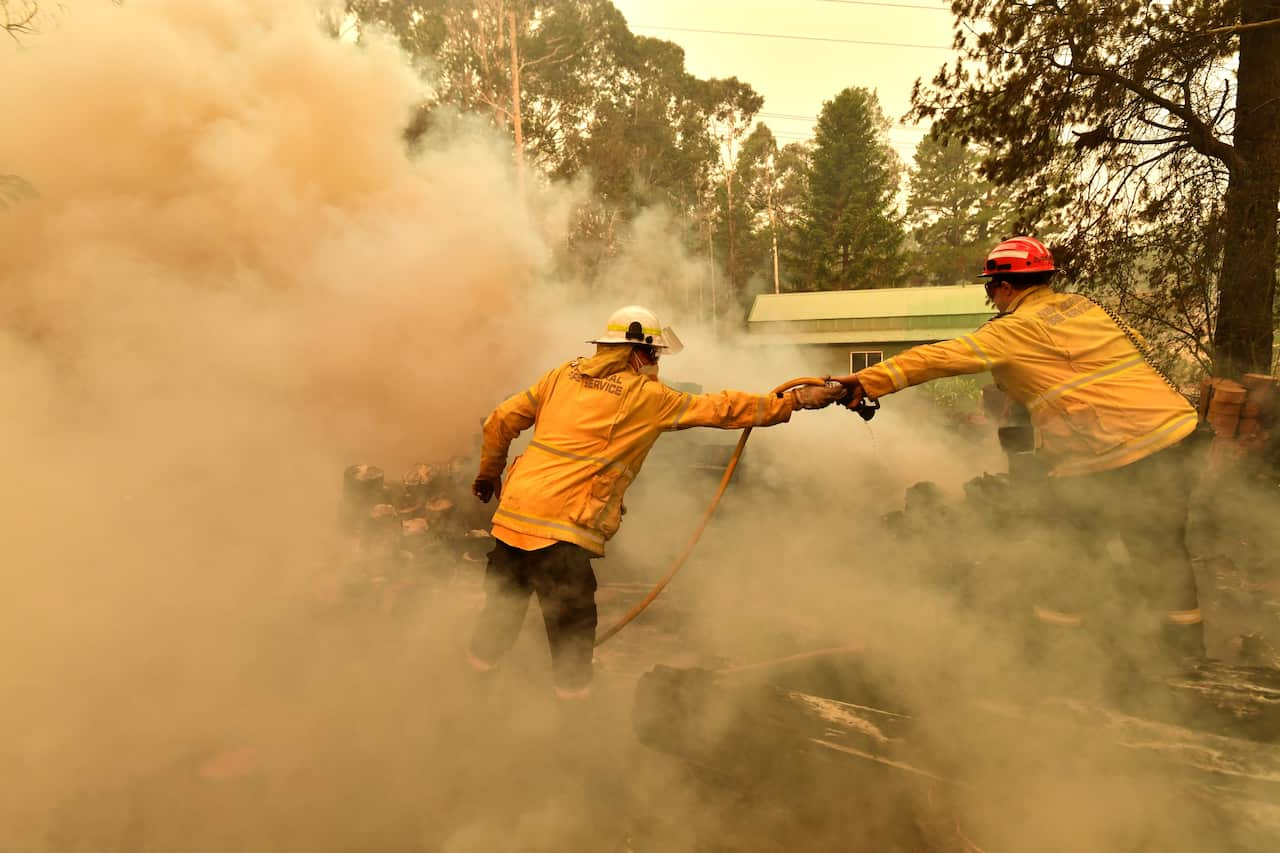NSW firefighters hope to seize on a temporary easing of conditions to get critical containment work done before temperatures soar later this week.
Firefighters faced after another tough day on Saturday as dozens of fires continued to burn throughout the state, including the massive Gospers Mountain blaze near Sydney's northwestern outskirts. NSW Rural Fire Service Commissioner Shane Fitzsimmons on Saturday afternoon said they were hoping to see conditions ease over the next 24 hours.
NSW Rural Fire Service Commissioner Shane Fitzsimmons on Saturday afternoon said they were hoping to see conditions ease over the next 24 hours.

Firefighters hose down a burning woodpile during a bushfire in Werombi, 50 kilometres south-west of Sydney. Source: AAP
He told the ABC it would allow firefighters "to really get in, consolidate and establish some containment lines" and conduct critical back-burning.
"Because we are expecting a return to another hot day, particularly Tuesday," Mr Fitzsimmons said.
"We're expecting to see temperatures climb into the high 30s or early 40s right across parts of NSW."
Sunday's fire danger will be very high in the central ranges, northwestern, New England, Greater Hunter and northern slopes regions.
The danger will be high in the Greater Sydney, Monaro alpine, far north coast, southern slopes, north coast, ACT, southern ranges and Illawarra/Shoalhaven areas, and low to moderate in the rest of NSW.
While firefighters continue to battle blazes across the state, burnt vegetation has landed in ocean off the coastline.
Some social media users have captured the black remnants washing up on shorelines, prompting concerns for wildlife.
University of New South Wales marine biologist Professor Emma Johnston has told SBS News there are a number of complications.
"There's two problems with this. One, with that high density of particulates, you can get the clogging of fish gills or filter feeders have trouble feeding," she said.
"But a second more indirect effect is that it can trigger an algal bloom. And if you get a really, really large algal bloom, when that starts to decompose it uses up all the oxygen and can cause fish kills from low oxygen environments."
The issue is also a potential risk to human health.
"When the rains finally come, they will wash a large amount more ash into our rivers and into our lakes and into our marine environment," Professor Johnston said.
"The biggest problems will be when that washes into our drinking water catchments because if we trigger large algal blooms in those catchments it can cause problems with the water supply."
With additional reporting from AAP
Share



